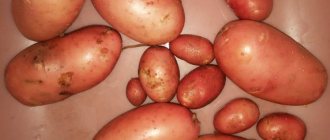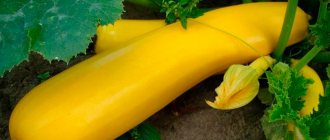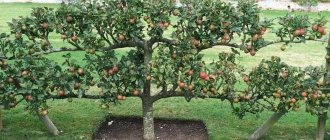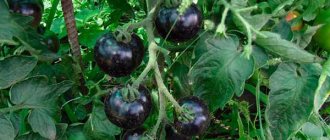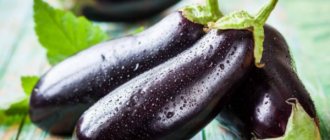Features of selection of winter-hardy cherries
Research has been carried out for a long time and various types of this heat-loving crop have been crossed to make it possible to grow it in regions with unfavorable weather conditions. Breeders managed to develop dozens of new species for central Siberia.
There are varieties that are highly resistant to frost, but during flowering and frost, the buds freeze and the harvest is lost. But there are also those that can withstand a decrease in temperature at any stage of development. Both types are used for planting in regions with different weather conditions. For example, Tyutchevka will perfectly tolerate winter with a temperature of -30 ° C and spring return frosts, and Bryansk pink can shed inflorescences if at the time of their formation the thermometer drops below 0 ° C.
Attention! For the first time, it was possible to develop cherries with resistance to severe frosts in St. Petersburg in the last century. Therefore, the most common varieties are called Leningrad Black and Yellow in honor of the city.
Siberian varieties of cherries: secrets of gardeners
Decades of trial and error in cultivating the fastidious sweet cherry on Siberian soil have revealed a number of secrets, the use of which will increase the winter hardiness of this crop.
- Choosing a location. In Siberia, the southern slopes of small hills near large bodies of water are used to place cherries. In such places, the likelihood of frost and sudden changes in humidity is lower.
- Age of seedlings. One-year-olds that have not yet been spoiled by warmth take root best.
- Spring planting. It takes time for the seedling to survive stress and begin strengthening its root system. In the fall he may not have time to do this.
- Soil quality. It should not suffer from excess sand or clay, be of average nutritional value, and not provoke the cherry to grow excessively.
Sweet cherries need quality shelter for the winter. - Formation of a short trunk. It is he who is most often exposed to frost damage, and subsequently suffers from gum disease. During Siberian snowfalls, a short trunk will completely go under the snow and remain unharmed.
Cherry trees beyond the Urals are not science fiction. If you correctly select several cross-pollinated varieties, plant them in the warmest place possible, form the crown correctly, do not overfeed it with nitrogen and help it overwinter, it will certainly delight you with scatterings of juicy, appetizing fruits.
Fruit differences
Among the winter-hardy varieties there are representatives with different berry characteristics. Based on your own wishes, you can choose pink, red or yellow. Also with the size of the fruits - from small ones - 2-4 g, to the largest - 12 g each. Another difference between all frost-resistant varieties is good stone separation. Of all the types, only Iput can cause trouble when preparing the harvest for conservation; in the rest, it is possible to separate the stone from the pulp almost “dry”.
Characteristics of berries:
- Fatezh – yellow-orange 4-4.5 g dense and juicy dessert type.
- Tyutchevka is dark garnet, elastic, sweet. Weight 5-5.5 g.
- Iput is a bright scarlet berry, soft and juicy inside, weighing 5.5 g.
- Veda - fruits with an average weight of 5g, burgundy color.
- Revna is a glossy dark wine-colored berry with a hard consistency inside. Average weight 4.5-4.8 g. High shelf life and transportability.
The most frost-resistant varieties of cherries for the Urals and Siberia
The harsh climate of the areas beyond the Ural Mountains is not conducive to growing such a heat-loving fruit crop as cherries. But gardeners are a patient people, they experiment, try and get good results. Cherry varieties have been developed that bear fruit in the conditions of the Urals and Siberia and successfully survive cold winters. The catalogs of manufacturing companies provide detailed descriptions with photos of frost-resistant species, so that by providing the trees with proper care, you can please yourself with a wonderful sweet berry.
Pros and cons of Siberian cherries
An undeniable advantage of winter-hardy varieties is their high immunity to the main common diseases of cherry. Most species do not affect coccomycosis, moniliosis and clasterosporiasis. The harvest usually tolerates transportation and storage well and does not lose its presentation.
The main disadvantage of most winter-hardy varieties is self-sterility. To pollinate inflorescences, there must be at least one more tree of a suitable species within a radius of 50-100 m. Also, in rainy spring and summer, the berries may crack, which spoils the presentation and reduces storage time.
Attention!
It is better to buy seedlings from local nurseries with a good reputation, which zone their products. In this case, the seedling variety will be suitable for planting in all respects.
Cherry planting technology
Siberian farmers offer the following technology for planting cherries in northern conditions:
- Dig a hole 0.7 m deep and 0.75–0.8 m in diameter.
- Mix a bucket of humus, 0.5 kg of lime, 50 g of potassium sulfate and 100 g of superphosphate. Pour this nutrient mixture into the bottom of the planting hole.
- Place the seedling in the hole, straighten the roots and slightly tilt the trunk towards the ground. This will make it more convenient to cover the plant for the winter.
- Fill the planting hole with soil.
Fruit tree planting scheme.
Pollinator varieties for common frost-resistant cherries
The harvest of all garden crops depends on how well pollination occurs during the flowering period of the tree. Sweet cherries are often self-sterile, so there should be at least two, or even three different varieties in one area or in neighboring ones. But even here you cannot plant the first seedling you come across. Each species has its own pollinators. If others are present, the harvest is scanty or absent altogether. For full pollination, trees should bloom at approximately the same period or the pollinator variety should bloom a little earlier.
Tyutchevka, Ovstuzhenka and Iput are suitable for almost all other frost-resistant varieties. They are considered universal and are in demand. Also for Veda the pollinator is Leningrad sulfur and Bryanochka, for Revna - Rechitsa, for Iput - Raditsa and Revna, for Ovstuzhenka - Rechitsa.
Rules for caring for cherries in Siberia
The rules for caring for crops in the Siberian climate are not much different from agricultural technology for a specific variety.
Important! When planting, you must choose a sunny area, protected from the north wind.
However, experienced gardeners offer several nuances in addition to the standard rules:
- In summer, trees need to be watered so that the ground is constantly slightly moist. To maintain the required level of moisture, the tree trunk circle is mulched with straw or sawdust.
- Every 3 years the planting should be limed .
- Every year in spring or autumn the tree trunk circle is dug up . During digging, add a bucket of humus and 50 g of complex mineral fertilizers to the soil. If the soil is clayey, sand is also added to it when digging.
- Pruning is carried out in the spring for sanitary purposes. Remove frozen, broken and diseased branches.
- To prevent fungal diseases, trees are sprayed with 1% Bordeaux mixture three times: after flowering, 3 weeks after the first time and at the end of fruiting.
- During the winter, cherries are covered in late October - early November. The optimal ambient temperature at the time of sheltering should be -5...-6°C. To do this, the branches are laid on the ground, attached with hooks, covered with burlap or other insulating material and secured on top with a weight. With the recommended planting with a slope to the ground, covering the plant will not be difficult.
Classification of frost-resistant cherries
Due to the climate in the local region, it is important to choose a variety that will bloom and bear fruit at a favorable time. Therefore, for Siberia, Leningrad, Moscow and southern regions, you always need to choose completely different types.
Classification by maturity:
- Early. By mid-June it is pleased with the fruits - Chermashnaya, Fatezh, Ovstuzhenka.
- Average. Beginning of July – Teremoshka, Rechitsa.
- Late. The harvest appears at the end of July or beginning of August - Bryanochka, Bryanskaya pink, Veda, Tyutchevka.
There are three main types of cherries based on the color of the berries. Red can be very dark or bright, with specks, glossy or matte (Teremoshka, Rechitsa). Yellow is considered a fresher cherry with high sweetness without sourness, sometimes there are pink impurities (Chermashnaya, Leningradskaya yellow, Zhurba). The third type is pink cherry (Bryanskaya, Zhemchug)
The height of crop trees in regions with harsh winters never exceeds 2.5-3 m. This is due to the peculiarities of the movement of cold air masses in winter and spring. Therefore, they are not classified into separate groups.
The best varieties of cherries for the Siberian expanses
Siberia and the Far East are regions with a very harsh attitude towards southern fruit crops.
In such conditions, skeletal branches, flower buds and even the cambium, a layer of cells that thickens the trunk, freeze slightly in cherries. Therefore, varieties that are full of health in southern gardens are difficult to grow beyond the Urals. The main condition for the survival of cherries in cold areas is the winter hardiness of flower buds. The efforts of Bryansk breeders, whose varieties are recognized as the best for the north of Russia, were aimed at strengthening this quality. These are Odrinka, Rechitsa, Revna, Tyutchevka, Bryansk pink.
A serious drawback of cherries, especially for frosty regions, is the tallness of the tree. It has to be combated by rigidly shaping the crown, but not all varieties can withstand heavy pruning. In this regard, the Ovstuzhenka variety is interesting with its “flexibility” in relation to severe shortening of shoots.
Ovstuzhenka Early
If the color of the fruit is important to the gardener, then he has the following varieties at his disposal:
- red: In memory of Astakhov, Teremoshka, Iput, Raditsa;
- pink: Bryansk pink, Pink pearl;
- yellow: Chermashnaya, Zhurba, Drogana yellow.
Such characteristics of varieties as early ripening are also important for Siberia. Summer is shortened, the cherries need to fill the harvest with sugar and shoots to ripen by winter. Tyutchevka, Symphony, Fatezh are distinguished by good precocity.
Advice. If you doubt the advisability of growing cherries, try planting them on your plot or find in its vicinity a plant called dog rose. This is a kind of indicator: where such rose hips bloom and bear fruit well, cherries will succeed there.
Characteristics of culture for different regions
The selection of cherries in areas with an unfavorable climate should be carried out much more carefully than in the southern regions. Here, the most important criterion is winter hardiness. For example, for the Moscow region, medium-resistant varieties are suitable, and for the middle zone closer to Siberia, the most winter-hardy varieties of delicious cherries will be needed.
For the Moscow region and Moscow region
Although the region is not characterized by severe frosts, as in the northern regions, it is still important to choose varieties with high resistance to cold. Particular attention should be paid to the ability of flower buds to withstand spring frosts.
Winter-hardy cherry varieties suitable for the Moscow region:
Proper preparation for winter is the basis for the survival of cherries
Accustomed to a mild climate, cherries grow freely, do not limit themselves in growth and are in no hurry to prepare for cold weather. Therefore, in the fall, the main concern of the Siberian gardener when working with this crop is to “instill” in the tree that a difficult period lies ahead. For this purpose, plants are sharply limited in nitrogen nutrition.
Bryanochka
The last feeding is carried out in May, then only superphosphate. With this regime, the cherry tree will be able to cope quite well with the formation of the harvest and the laying of new flower buds, but there will not be enough strength for the autumn shoot formation. In such conditions, the already regrown shoots will stop growing, begin to become lignified, become covered with cork, and go into the winter prepared.
A warm, humid autumn can “deceive” a southern tree, and the cherry tree will continue to lengthen its branches. In this case, they should be trimmed with pruning shears, depriving the apical cones of growth.
Advice. Buy seedlings grafted onto a cherry-bird cherry hybrid - cerapadus. They are more frost-resistant because the roots of the rootstock inherited the ability to survive extreme cold from their northern parents.
In the conditions of Siberia and the Far East, it is possible to form the crown of a cherry tree in the form of a low bush or even a stanza - a strongly inclined, but not horizontal tree. In autumn, the branches of the plant are pressed to the ground and covered with a thick layer of hay or straw. Snow-retaining shields around the garden will allow you to additionally insulate the delicate plant with snow.
In order for such elfin cherries to quickly resume their metabolism in the spring and begin flowering, the branches, after being freed from the covering material, are propped up with spears and the space under them is completely cleared. The black surface of the earth, without a blade of grass, will begin to accumulate heat and “warm” the overwintered trees.
Cherries in the garden
Harvest and storage
The first 4 years after planting a seedling, gardeners spend only caring for the plant. He needs to strengthen, increase in size and gain strength. In the 5th year the harvest appears for the first time. It is harvested in Siberia towards the end of June for early varieties and in August for late varieties.
Fruits cannot be stored for a long time. They can last a maximum of 5-6 days in the refrigerator on the bottom shelf or in the drawer for vegetables, fruits and herbs. Later, the berries lose their taste and begin to deteriorate. Before sending for storage, cherries should be sorted and spoiled fruits removed.


